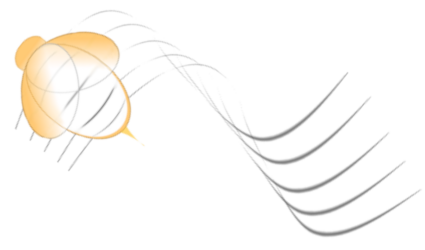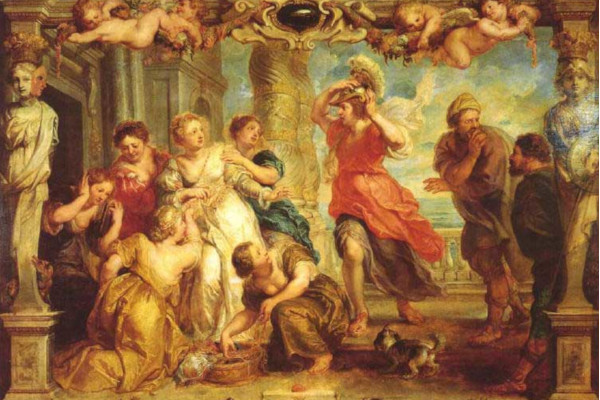La prima sospesa
Dal 17 al 28 marzo sarebbe dovuto andare in scena al Teatro Real di Madrid la prima ripresa moderna dell'opera Achille in Sciro di Francesco Corselli su libretto di Pietro Metastasio.
La sospensione delle attività per fronteggiare la diffusione del Covid-19 ha rimandato anche il ritorno sulle scene madrilene dell'opera scritta nel 1744 per le nozze fra l'infanta María Teresa Rafaela e il delfino di Francia Louis, figlio di Luigi XV.
In attesa che la situazione torni alla normalità e che si possa riprogrammare il ritorno di Achille in Sciro, vi proponiamo una panoramica sulla produzione: una sorta di debutto virtuale.
Achille in Sciro
opera seria in tre atti
Musica by Francesco Corselli (1705-1778)
Libretto by Pietro Metastasio
Premiered in the Court of the Real Coliseum of the Buen Retiro in Madrid on the 8th of December, 1744.
Work recuperated by the Instituto Complutense de Ciencias Musicales (ICCMU)
Premiere in the Teatro Real
New production of the Teatro Real
Artistic Team
Conductor I Ivor Bolton
Stage Director I Mariame Clement
Set and Costume Designer I Julia Hansen
Coreographer I Mathieu Guilhaumon
Lighting Designer I Philippe Berthomé
Licomede
- I Andrea Mastroni- 17, 19, 22, 25, 27 mar
- I Grigory Shkarupa - 20, 23, 26 mar
Ulisse
- I Tim Mead - 17, 19, 22, 25, 27 mar
- I Christopher Lowrey - 20, 23, 26 mar
Deidamia
- I Francesca Aspromonte - 17, 19, 22, 25, 27 mar
- I Francesca Lombardi Mazzuli - 20, 23, 26 mar
Teagene
- I Sabina Puértolas - 17, 19, 22, 25, 27 mar
- I Leonor Bonilla - 20, 23, 26 mar
Achille/ Pirra
- I Franco Fagioli - 17, 19, 22, 25, 27 mar
- I Jake Arditti - 20, 23, 26 mar
Arcade
- I Kenneth Tarver - 17, 19, 22, 25, 27 mar
- I David Alegret - 20, 23, 26 mar
Nearco
- I Juan Sancho - 17, 19, 22, 25, 27 mar
- I Krystian Adam - 20, 23, 26 mar
Possibile scenografia originale
il manoscritto della partitura
Le foto delle prove
“ACHILLE IN SCIRO” PRESS RELEASE
THE BIRTH OF A HERO
The Teatro Real rediscovers the opera Achille in Sciro (Achilles in Skyros), by Francesco Corselli, 275 years after its premiere in Madrid
ACHILLE IN SCIRO, BY FRANCESCO CORSELLI
Historical context
In 18th century Europe, religious wars gave way to battles of a territorial nature of continuous treaties, alliances and pacts, many of which were sealed with royal marriages. This was the framework for the union between the Infanta of Spain María Teresa Rafaela, daughter of Philip V and Elisabeth Farnese, and the French Dauphin, Louis, son of Louis XV. They were married by proxy in Madrid on December 18, 1744 while the official wedding took place at Versailles on February 23, 1745. With this alliance, it was hoped that the tension between both countries would be appeased.
To commemorate the marriage of the future King and Queen of France ─ who never reigned due to their premature deaths ─ two musical works were composed: Achille in Sciro by Francesco Corselli, inaugurated the wedding festivities at the Coliseo del Palacio del Buen Retiro in Madrid on December 8, 1744, in the presence of the Infanta and the King and Queen of Spain, prior to the young bride departing for France; Platée by Jean-Philippe Rameau, was presented at the Grand Écurie of Versailles for the French Royal family a month after the nuptials.
A year after the wedding celebrations, the Spanish Infanta died in childbirth in Paris and her daughter would die at the age of 2. The Dauphin of France lived another 20 years with his second wife; however, he died of tuberculosis before ever ascending the throne.
Achilles in Skyroswill be seen for the second time in Madrid this spring, 275 years after its premiere. However, now we know that the marriage for which it was composed certainly did not have the happy ending of the opera.
Francesco Corselli(1705-1778)
Francesco Corselli was born in Piacenza, the son of Charles Courcelle, the French dancing master of Elisabeth Farnese in Parma. He was trained as a composer in Parma and Venice, where he premiered his two operas. In 1733, Corselli came to Spain. Later, he was named maestro of the Capilla Real (Royal Chapel) where he remained for four decades. His important Italian influence on the royal household was reinforced by the presence of the famous castrato Farinelli (1705-1782), a highly esteemed singer and musical advisor to the Spanish court for the more than 20 years he lived in Madrid.
Corselli’s work includes a notable catalogue of primarily religious compositions. These coexisted with the final period of Baroque music in Europe during the mid18th century, which by then, was deprived of its basic characteristics in favour of more austerity, connecting it with the Classical period. Of his six known operas, two owe their libretto to Pietro Metastasio (1698-1782): Achilles in Skyros is one of the two. Metastasio was a close friend of Farinelli. According to musicologist Álvaro Torrente, Farinelli mediated in the contracts of the librettist, the choice of singers and other details related to the production of the opera.
Pietro Metastasio wrote 27 opera librettos for which nearly 900 musical scores were composed during the 18th century. Achilles in Skyros, with the music by Antonio Caldera, was penned in barely 18 days in 1736 to celebrate the marriage of María Teresa of Austria. This same libretto would be used in another 38 operas, nearly all of which, like that of Francesco Corselli, have been largely forgotten.
Achille in Sciro by Francesco Corselli
The tessituras of the interpreters in the Teatro Real production are in parenthesis.
The opera narrates the entertaining episode in the life of Achilles (Achile, contra tenor, tessitura of a soprano), when his mother, Thetis, decides to send him to the island of Skyros. This was to avoid the brave and impulsive youth taking part in the Trojan War, where, according to the oracle, he would perish.
With the complicity and under the vigilance of the aging Nearco (tenor), along with the incautious help of King Lycomedes (Licomede, bass), Achilles hides among the King’s daughters, disguised as a girl with the name of Pirra. This gives him the opportunity to discover and enjoy ─ incognito ─ the charms and pleasures of young women. Behind this erotic game and chameleonic transvestism is his secret amorous relationship with Deidamia (soprano), daughter of Licomedes, destined to wed the young Teagene (soprano), who, in turn, is in love with Pyrrha / Achilles.
Amid these hilarious imbroglios, where sexual ambiguity is accentuated by the singers’ tessituras and gender transpositions, the powerful Ulysses (Ulisse, contratenor, tessitura of a mezzosoprano) arrives on the island. He has been informed of the situation and decides to reclaim Achilles to lead the Greek army. Well aware of his untimely impulses and fighting spirit, Ulysses uses all the necessary subterfuge to seduce the boy: he gives an eloquent speech which calls upon the heroic defence of Greece, offers gifts to the King’s daughters while hiding a sword for Achilles, and simulates a false attack on the island which is what finally awakens the spirit of the future hero.
At this point, the opera takes on its epic nature of opera seria. Achilles leaves behind his youthful ardour and there is a debate - until the end of the opera – of the grand ethical questions which underlie the myth:
─ A short life of glory or a long life without it?
- Blissful love or battle for an ideal?
─Immortality in Elysium or heroic death as a man?
The new production of the Teatro Real
The stage director Mariame Clément digs into these and other questions in her original dramaturgy by staging Achilles in Skyros in the presence of the historical Infanta María Teresa Rafaela. In this “éducation sentimentale”, the characters and the subsequent scenes of the opera are a motive for reflection about the emotions, pleasures, ideals, obligations, doubts, fears and attributes of men and women.
With the complicity of set and costume designer Julia Hansen, with whom she collaborates regularly, Clément situates the story of the opera in an “enchanted grotto” of rococo fragrance, which evokes the fanciful ruins created for 18th century gardens; or the curved and sensual shape of a woman’s womb, that of a protective mother; or a rock on an imaginary island. This is where Achilles lives in disguise; he is young, playful and participates in the same circumstances as the other girls. However, he leaves the island as an adult, prepared to fight for his people, infused with masculine and heroic power, ready to abandon his beloved after the joyous wedding at the end of the opera. This marks the route of initiation and the birth of a hero; and a journey along the road of 18th century opera from the sexual freedom, abstraction and delights of the original Baroque period to the conventionalism of the genre which would prevail in the following centuries.
Franco Fagioli
Franco Fagioli
Ivor Bolton
Alvaro Torrente
Mariame Clément
Julie Hansen
Franco Fagioli
Alvaro Torrente
Mariame Clément
Madrid, Achille in Sciro
- 22 Marzo 2020









